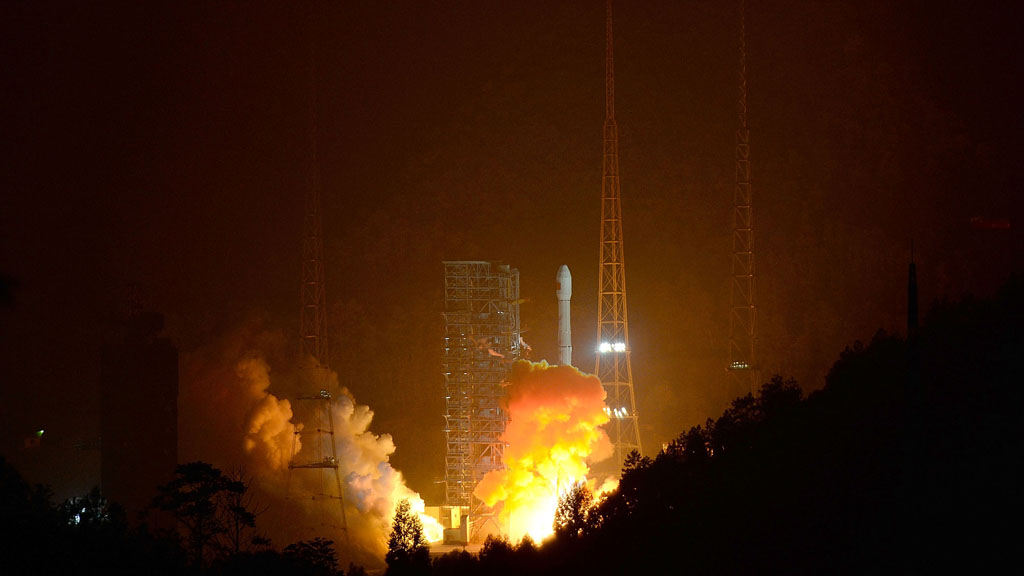China’s first moon landing – what is in it for them?
The Chinese have successfully touched down spacecraft Chang’e 3 in the first moon landing since 1975. Why is the moon back on the agenda? And what is the mystery mineral they’re interested in?
China became the third nation to have successfully landed a craft on the moon. China’s Chang’e 3 lander “soft-landed” on a lava plain on the moon at 1.30pm GMT, from where it will release a rover.
It is the first time humans have landed anything on the moon since the USSR’s Luna 24 in August 1975, which gathered a soil sample and blasted back to Russia. The last manned mission was NASA’s Saturn V three years earlier. Several vessels have crashed into the moon since then but this is the first successful soft-landing for 38 years.
Powerful tech, powerful China
Chang’e 3 – named for a legendary Chinese Goddess who is said to live on the moon – marks a significant technological leap forward for China. Whereas space technology usually improves at a rate of 30 per cent between missions, the Chinese claim that this craft marks an improvement of 80 per cent on its predecessor. The landing makes a big geopolitical statement about Chinese capability in space.
Especially impressive? The technology for soft-landing the craft. It enabled the 1.2 tonne Chang’e to fall from 15 kilometres above the moon’s surface to 2.9 metres above it at a speed of 1.7 kilometres per second before engine brakers halted it above the surface, letting it drop the remaining distance to land intact. It’s the first time China has built such technology.
And the sophistication of it is a sign of more to come. China will be sending much more than small rovers there in the future, Paul Spudis, a planetary geology and remote sensing expert at the Lunar and Planetary Institute in Houston told Space.com.
“Clearly, they have other payloads in the queue, waiting to be sent there. Just what, we shall have to wait and see,” Paul Spudis
He notes that the Chinese have built a lander that can carry nearly 1,700kg to deliver a rover that Chinese media reports as weighing 140kg.
“Clearly, they have other payloads in the queue, waiting to be sent there. Just what, we shall have to wait and see,” Mr Spudis said.
But it’s not just mechanical power-play – the Chinese are very interested by what they can find in the moon. And the hope of discovering rare materials and information about the structure of moon’s surface could provide the basis for moon mining expeditions in the future.
Moon mining
This will be the first opportunity for decades to explore the rocks that make up the moon.
After landing the tool-laden rover Yutu will set out from the landing spot and roam the surface of the moon for three months, sending reports back to China.
Yutu is a six wheeled buggy equipped with 3D cameras, a radar underbelly that that can analyse rocks beneath and a robotic arm with science sensors on the end of it. The radar may provide some of the most interesting information about what could be trapped under the moon’s surface. Space geologists speculate that China is interested in Helium-3 a substance that is rare on earth but may be more common on the moon.
The material could be used to energise nuclear fusion reactions – a process that creates much more energy than nuclear fission without the radioactive waste.

-
Latest news
-
Windrush scandal: returning to the UK after a forty year wait6m

-
Netanyahu ‘survival’ depends on ‘expanding war’ says head of Palestinian National Initiative5m

-
Proposed law change could strip parental rights from paedophiles5m

-
Hugh Grant settles privacy lawsuit against The Sun newspaper publisher2m

-
Post Office Scandal: what did top executive know?6m

-




